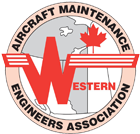Infographic shines the spotlight on the Sikorsky S-92 helicopter and was released to coincide with WinAir’s attendance at the HAI Heli-Expo
The Essential Guide to the Sikorsky S-92 Helicopter Infographic showcases features and statistical information relating the S-92 helicopter. It was created using information primarily obtained from Wikipedia’s “Sikorsky S-92” article and Lockheed Martin‘s “Sikorsky S-92 Multi-Mission Helicopter” brochure. The image highlights vital statistics, general characteristics, and key performance data associated with the aircraft.
The S-92 is a medium-lift/utility helicopter manufactured by Sikorsky Aircraft. It completed its maiden voyage on December 23, 1998, and has been in production since that year. The aircraft is used to fulfill a variety of roles within the civil and military sphere—from executive transport, to search and rescue (SAR) missions, naval operations, boarder patrol, offshore oil and gas industry support, and airline services. In addition, the S-92 is the helicopter of choice for a number of heads of state, including the President of the United State of America, who’s S-92, commonly referred to as “Marine One” is considered a safe and logistically sound alternative to presidential motorcades.
For easy access, a consolidated infographic summary is included below the image.
(Click on the image to zoom into the material)
The Essential Guide to the Sikorsky 92 (S-92) Helicopter Summary
Vital Statistics
- First Flight: December 23, 1998
- Introduction: 2004
- Nation of Origin: USA
- Current Status: In Service
- Number Produced: 200+
- Manufactured by: Sikorsky Aircraft
- Helicopter Role: Medium-lift Transport/Utility Helicopter
- Developed From: Sikorsky S-70
- Variants: Sikorsky CH-148 Cyclone
- Unit Cost: VH-92A – $90m ex R&D
General Characteristics
- Crew: 2 (pilot, co-pilot)
- Capacity: 19 passengers
- Length: 56 ft 2 in (17.10 m)
- Rotor Diameter: 56 ft 4 in (17.17 m)
- Height: 15 ft 5 in (4.71 m)
- Disc Area: 2,492.3 ft² (231.54 m²)
- Empty Weight: 15,500 lb (7,030 kg)
- Loaded Weight: 26,500 lb (12,020 kg)
- Max. Takeoff Weight: 26,500 lb (12,020 kg)
- Fuselage Length: 56 ft 2 in (17.1 m)
- Fuselage Width: 17 ft 3 in (5.26 m)
- Rotor Systems: Main rotor has 4 blades. From the main gearbox a set of driveshafts connect to the tail gearbox to turn the 4-blade tail rotor.
- Cabin Dimensions: 20 ft long by 6.6 ft tall
- Aircraft Engine: 2 × General Electric CT7-8A Turboshaft, 2,520 shp (1,879 kW) each
Performance
- Maximum Speed: 165 knots (190 mph, 306 km/h)
- Cruise Speed: 151 kn, 174 mph (280 km/h)
- Range: 539 nmi (999 km)
- Service Ceiling: 14,000 ft (4,270 m)
- Disc Loading: 9.8 lb/ft² (48 kg/m²)
- Power/Mass: 0.23 hp/lb (0.38 kW/kg)
Aviation Maintenance Software Packages for Helicopter Operators and More
At WinAir, we understand the unique requirements of helicopter operators. So whether your fleet is comprised of S-92s or any other helicopter-type, we’ve got you covered! Our WinAir Version 7 Heliops Package was designed specifically to meet and exceed the expectations of any sized helicopter operation. It offers owners the opportunity to streamline business processes and improve efficiencies at all levels of their helicopter organization. And if something more specific or all encompassing is required, we offer Custom and All Inclusive Package options (along with packages for Operators, CAMOs, and MROs).
Would you like to have a closer look at the WinAir Version 7 Heliops Package? Contact us now to book your time for a custom WinAir Version 7 demonstration!
About WinAir:
Based in London, Ontario, Canada, WinAir has 30 years of experience as a leader in aviation management software. Companies rely on WinAir to efficiently and effectively track and manage aircraft maintenance and inventory control. WinAir is proud to lay claim to hundreds of installations at aviation-specific organizations worldwide. From airlines, to heli-ops, to law enforcement agencies, oil industry suppliers, MROs, CAMOs, medical evacuation response teams and more, businesses using WinAir regard the solution as a necessary component to the successful management of their fleet maintenance programs.






